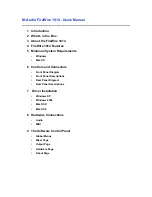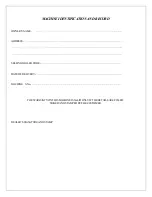
Brüel & Kjaer Vibro ● 10/2019 ● C106002.001 / v04 ●
Page 13 of 20
Technical alterations reserved!
Brüel & Kjaer Vibro │
Instruction AS-477
Application
EN
2 Application
The AS-477 is mainly used for measurement of vibrations at rotating machines such as turbines, pumps,
compressors, etc.
3 Measuring Principle
The acceleration sensor operates according to the piezo-electric principle. A piezo-element and an internal
sensor mass form a spring-mass system in the sensor.
If this system is subjected to vibrations the mass produces an alternating force on the piezo element.
As a result of the piezo effect an electrical charge is produced that is proportional to vibration acceleration.
An integrated amplifier converts this charge signal into a usable voltage signal.
4 Mounting
4.1 Coupling
General rule:
The weight of the acceleration sensor should always be lower at least by a factor ten than the weight of the
object onto which it is mounted.
The acceleration sensor is an additional mass, which loads the object on which it is mounted, and this changes
the vibration behaviour if it is too large. The sensor requires a friction-locked, contact resonance-free, rigid
mounting to the object, particularly for measurements at high frequencies. The cable must be attached on a
non-tension basis and load-free in connection.
Figure 4-1)
Mounting (all length in [mm])
Acceleration Sensor AS-477
Threaded stud secured
with Locite
Mounting surface






































